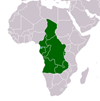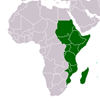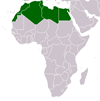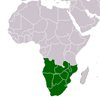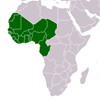Hatchery culture of bivalves! practical manual
Hatchery culture of bivalves! practical manual
Bivalve mollusk culture is an important and rapidly expanding area, area of world aquaculture production, representing approximately 20 percent of the sector’s output at 14 million tonnes in 2000. The majority of production is from natural population although increasingly stocks are approaching or have exceeded maximum sustainable yields. Stock enhancement through the capture and relaying of natural seed in both extensive and intensive forms of culture is common practice worldwide but the reliability of natural recruitment can never be guaranteed, and conflicts over the use of the over the use of the coastal zone are becoming ever more pressing. A solution to meeting the seed requirements of the bivalve industry, applicable to the production of high unit value species such clams, oysters and scallops, is hatchery culture. The production of seed through hatchery propagation accounts at the present time for only a small percentage of the total seed requirement but it is likely to become increasingly important as work continues to produce genetically conditions. The advent of bivalve hatcheries was in Europe and the United States in the 1960’s. Since those early pioneering days, knowledge of the biological requirements of the various species that predominate in world-wide aquaculture production and the technology used to produce them has grown and continues to improve. This manual brings together the current state of knowledge in describing the various aspects of hatchery culture and production from acquisition of brood-stock to the stage at which the seed are of sufficient size to transfer to sea-based grow-out. Focus is on intensive methodology in purpose-built hatchery facilities rather than on more extensive methods of seed production in land-based pond systems. For a complete view, the intermediate nursery phase of production, which is the interface between the hatchery and sea-based grow-out and the concept of remote setting are also described and discussed in one depth. This manual is not intended as a scientific treatise on the subject. Rather, it provides the reader with a practical insight as to what is required in the way of resources and details of how to handle and manage the various life history stages of bivalves in the hatchery production cycle. Example are largely drawn from the more commonly cultured temperate climate species including the Pacific oyster, Crassostrea gigas, the American (Eastern) oyster, Crassostres virginica, the European flat oyster, Ostrea edulis, the Manila clam, tapes philppinarum and a range of scallop species. Consideration is also given to the culture of tropical bivalves. Methods described are equally as applicable to bivalves of lesser significance in terms of word-wide production. The authors recognize that bivalve hatchery production is as much an art founded on science as it is a science per se. There are as many ways of operating and managing a hatchery as there are hatcheries in terms of the sophistication of the facility and the precision with which each part of production is approached. In these respect, many experienced hatchery managers will consider much of the detailed information as “overkill.” However, the authors have considered the need for a thorough grounding for new entrants in this field, not just how the various procedures are done but the biological basis of why they are done in that way. Thus, the content is equally as appropriate to the operation of a closely controlled experimental hatchery as it is to a commercial-scale hatchery. In addition to explanations of culture technology and methodology, the manual includes a brief discussion of the processes of identifying a suitable site for locating a hatchery.
CITATION: Helm, Michael M.. Hatchery culture of bivalves! practical manual edited by Lovatelli, Alessandre. . Rome : FAO , 2004. - Available at: https://library.au.int/hatchery-culture-bivalves-practical-manual-3

